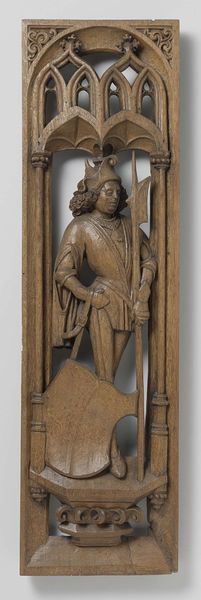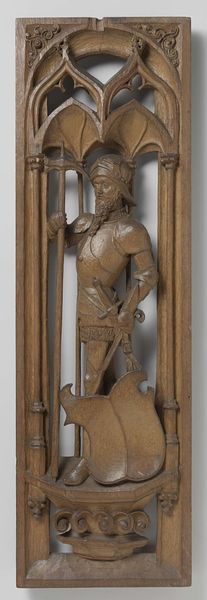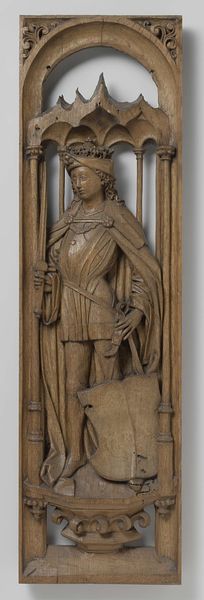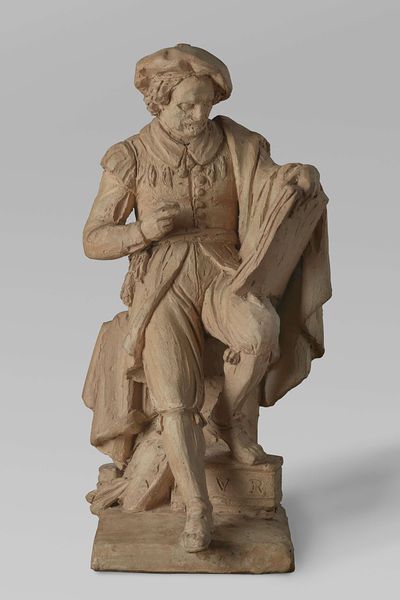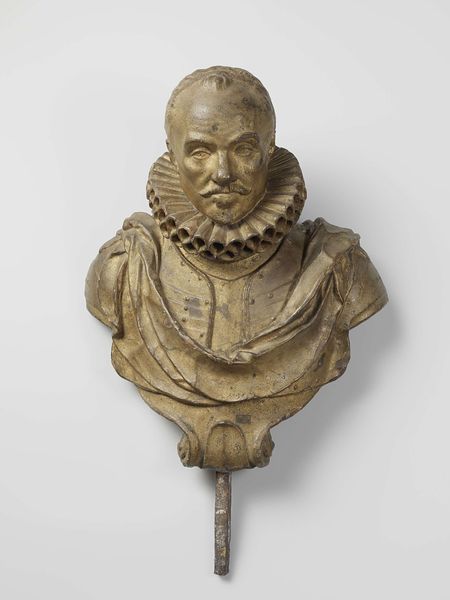
Panels from an organ case in the church of Saint Vitus in Naarden c. 1510 - 1520
0:00
0:00
carving, sculpture, wood
#
carving
#
sculpture
#
figuration
#
sculpture
#
wood
#
history-painting
#
northern-renaissance
Dimensions: height 85 cm, width 26.5 cm, depth 6 cm
Copyright: Rijks Museum: Open Domain
Editor: This wooden panel, "Panels from an organ case in the church of Saint Vitus in Naarden," carved around 1510 to 1520 by Jan van Schayck, features a stately figure with not one, but two swords! It feels both powerful and reverent. What strikes you most about this piece? Curator: What immediately captures my attention is the integration of civic power into a religious context. This panel, once part of an organ case, blends the sacred space of a church with the clear symbol of worldly authority – the warrior, the swords, the shield. The commission of the artwork serves a distinct purpose here, I wonder. Editor: Commission? In what way? Curator: Churches in that period often represented and served the elite class through symbolic visual and material means. To that end, Jan van Schayck received a commission from a prominent local family to have the leader sculpted holding weapons. The artist integrated political power into religious structures of that era through imagery that spoke to faith, legacy and earthly command. Editor: So, it's not just a beautiful decoration but a deliberate statement about power? Curator: Precisely. Art like this tells us a lot about the function of art, both in society and political life. The visual is in effect a statement. Editor: That completely reframes how I see it. Thanks to its commission the warrior transcends being purely ornamental. It symbolizes authority in addition to aesthetics, bridging societal expectations and ideals. Curator: Absolutely, and thinking about these social functions gives us deeper understanding of not just the artwork but of the broader culture in which it was made and received.
Comments
rijksmuseum about 2 years ago
⋮
These ten figures adorned the medieval organ in the church of Saint Vitus in Naarden. Each figure holds a weapon and a coat of arms on a strap. Some are dressed as knights with a breastplate and a helmet, others as princes or noblemen. They may represent the Counts of Holland. All the shields would have originally been painted.
Join the conversation
Join millions of artists and users on Artera today and experience the ultimate creative platform.

